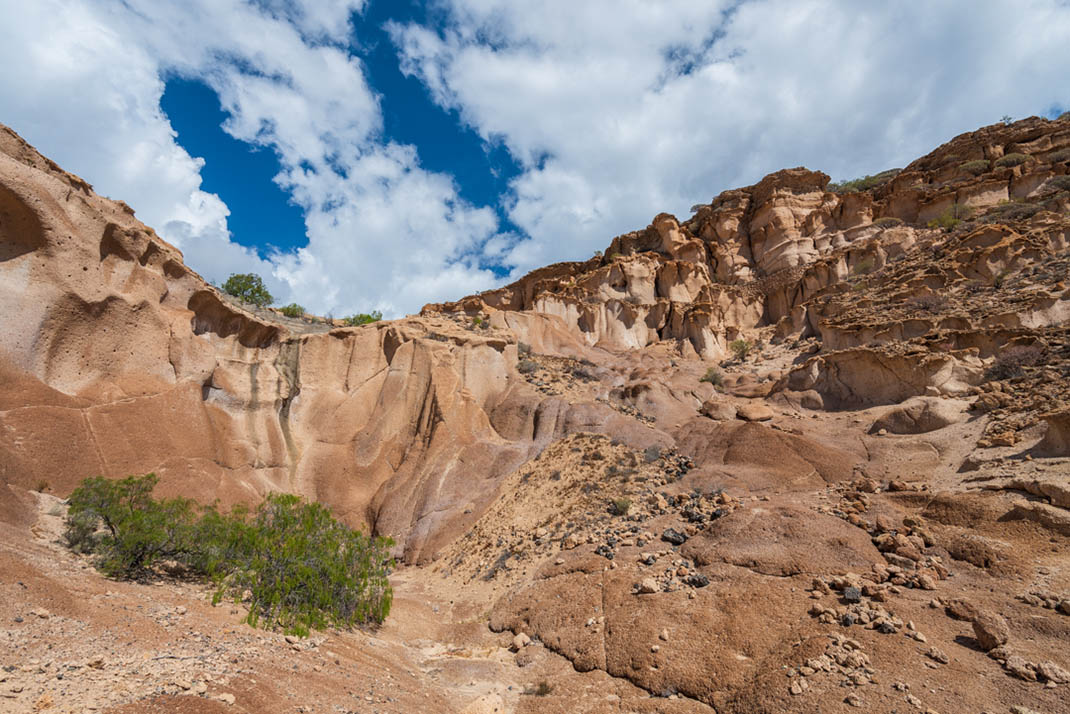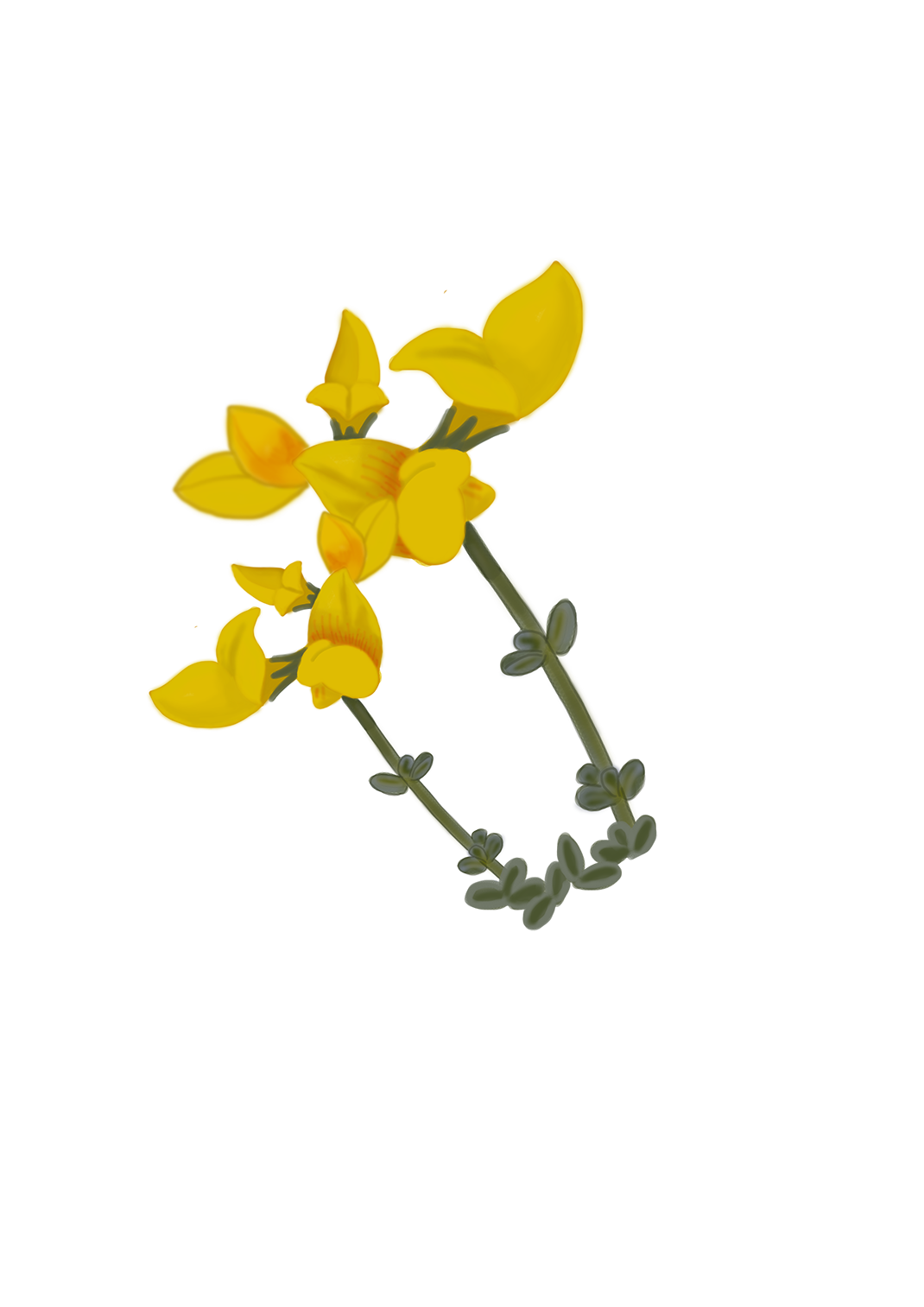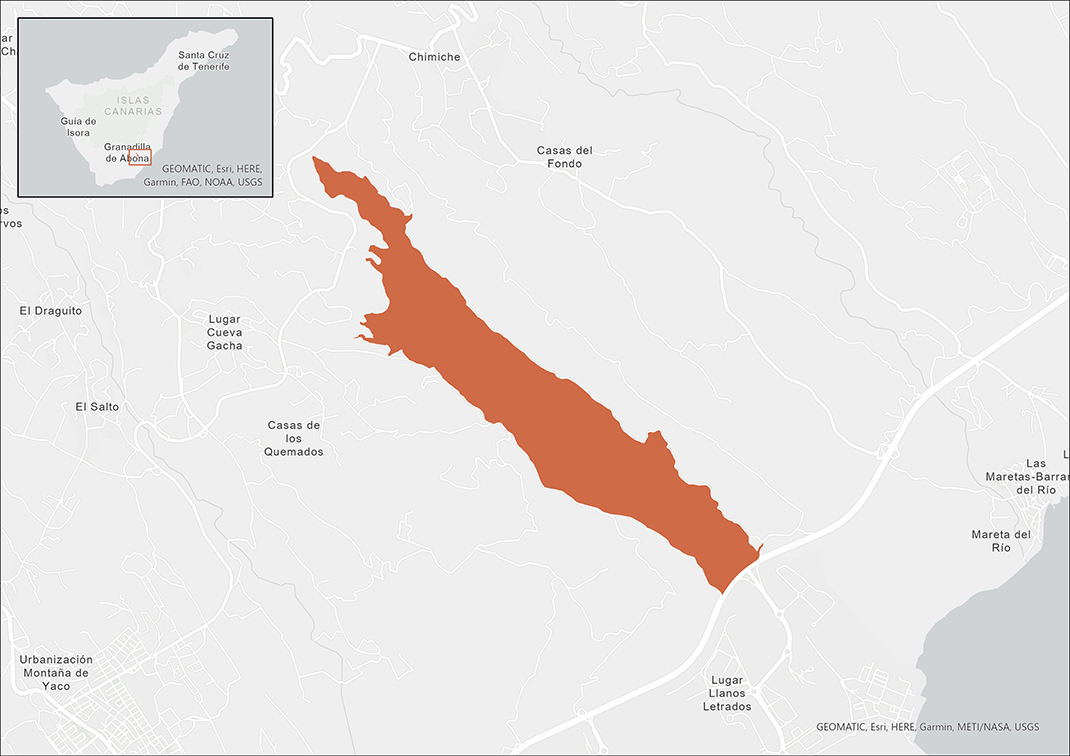Plan your next adventure
Tailor your own route along Tenerife’s trails quickly and easily..
Go to planner
The landscape and the vegetation that grows in this arid place are conditioned by the strong winds and the high amount of sunshine that this part of the island is exposed to.
Recommended time to visit: All year round.
The Los Derriscaderos Natural Monument, which rises from 100 to 400 metres above sea level, is a network of ravines carved out by the erosion of large deposits of tuff, with its characteristic whitish colour.
These deposits were formed from pyroclastic flows, fast-moving currents of hot gas and tephra produced by explosive eruptions.

Most of the area is covered by sparse patches of spurge, as the tuffaceous soils are very compact and not suitable for sustaining abundant vegetation.
The dominant species is tabaiba dulce (Euphorbia balsamifera), together with salado (Schizogyne sericea), leñasanta (Neochamaeleapulverulenta), aulaga (Launaeaarborescens) and cardoncillo (Ceropegiadichotoma). Balo (Plocama pendula) and Canary Island lavender (Lavandula canariensis) also grow in the beds of the ravines.
In some areas of basaltic rock, you can see large specimens of cardón or Canary Island spurge (Euphorbia canariensis), while in the higher areas, from 250 metres upwards, other species that require more humidity, such as verode (Kleinianeriifolia), tasaigo (Rubia fruticosa), and romeromarino (Campylanthussalsoloides), can be found.
You will also be able to see thermophilic plant species such as guaydil (Convolvulus floridus), acebuche (Olea cerasiformis), Mount Atlas mastic tree or almácigo (Pistacia atlantica) and flor de mayo (Pericalliscruenta) growing in secluded patches.
The most striking wildlife found here are the birds. You will most frequently see species typical of desert and steppe environments, such as Berthelot’s pipits, spectacled warblers or stone-curlews scurrying about or flying close to the ground.
It is also common to see the occasional kestrel high above or barn owls hunting for mice at nightfall.
Due to the environmental conditions, invertebrates are scarce here, but of special note is a spider beetle endemic to Tenerife. As for reptiles, you can often spot Tenerife lizards and Tenerife geckos.

268.3 ha (0.1% of the island).
Tabaiba dulce (Euphorbia balsamifera), leñasanta (Neochamaeleapulverulenta), aulaga (Launaeaarborescens), cardoncillo (Ceropegiadichotoma), balo (Plocama pendula), Canary Island lavender (Lavandula canariensis), cardón or Canary Island spurge (Euphorbia canariensis), verode (Kleinianeriifolia), tasaigo (Rubia fruticosa), romeromarino (Campylanthussalsoloides), guaydil (Convolvulus floridus), acebuche (Olea cerasiformis), Mount Atlas mastic tree or almácigo (Pistacia atlantica), flor de mayo (Pericalliscruenta), Berthelot’s pipit, spectacled warbler, stone-curlew, kestrel, barn owl, Canary Island spider beetle, Tenerife lizard, Tenerife gecko.
Tabaibal (Euphorbia), ravine, rocky habitat.
Barranco del Mocán.
To consult permits for use and updated regulations for this Protected Natural Area, visit the official website of the Government of the Canary Islands.

Tailor your own route along Tenerife’s trails quickly and easily..
Go to planner